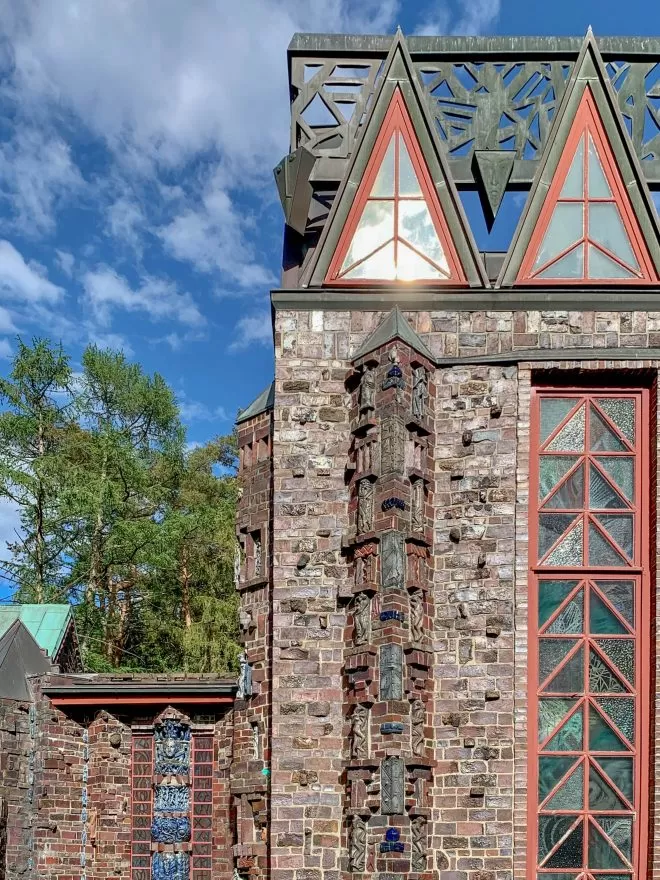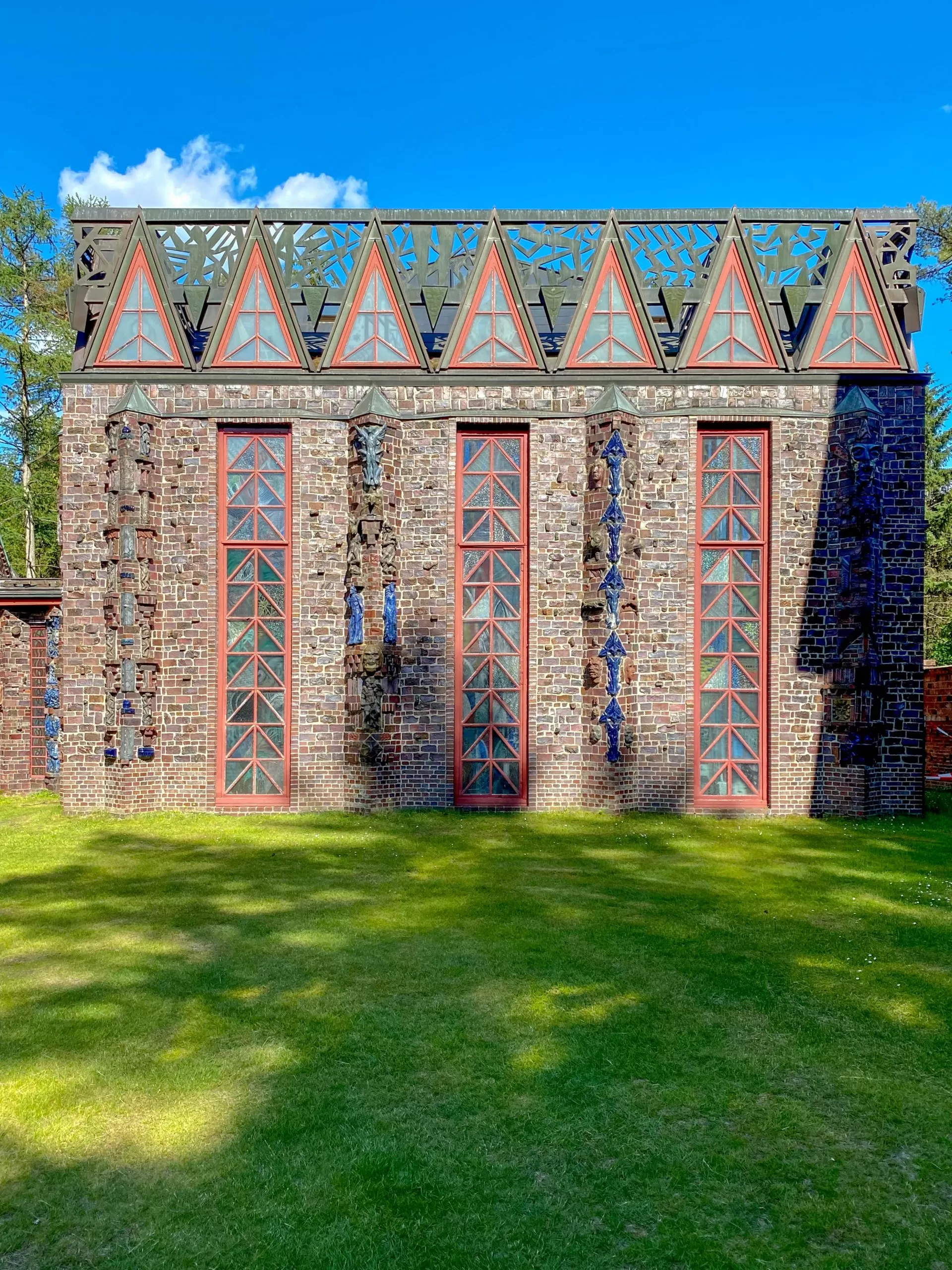
Kunsttempel Kunststätte Bossard, 1926-1928. Design: Johann and Jutta Bossard. Photo: Daniela Christmann
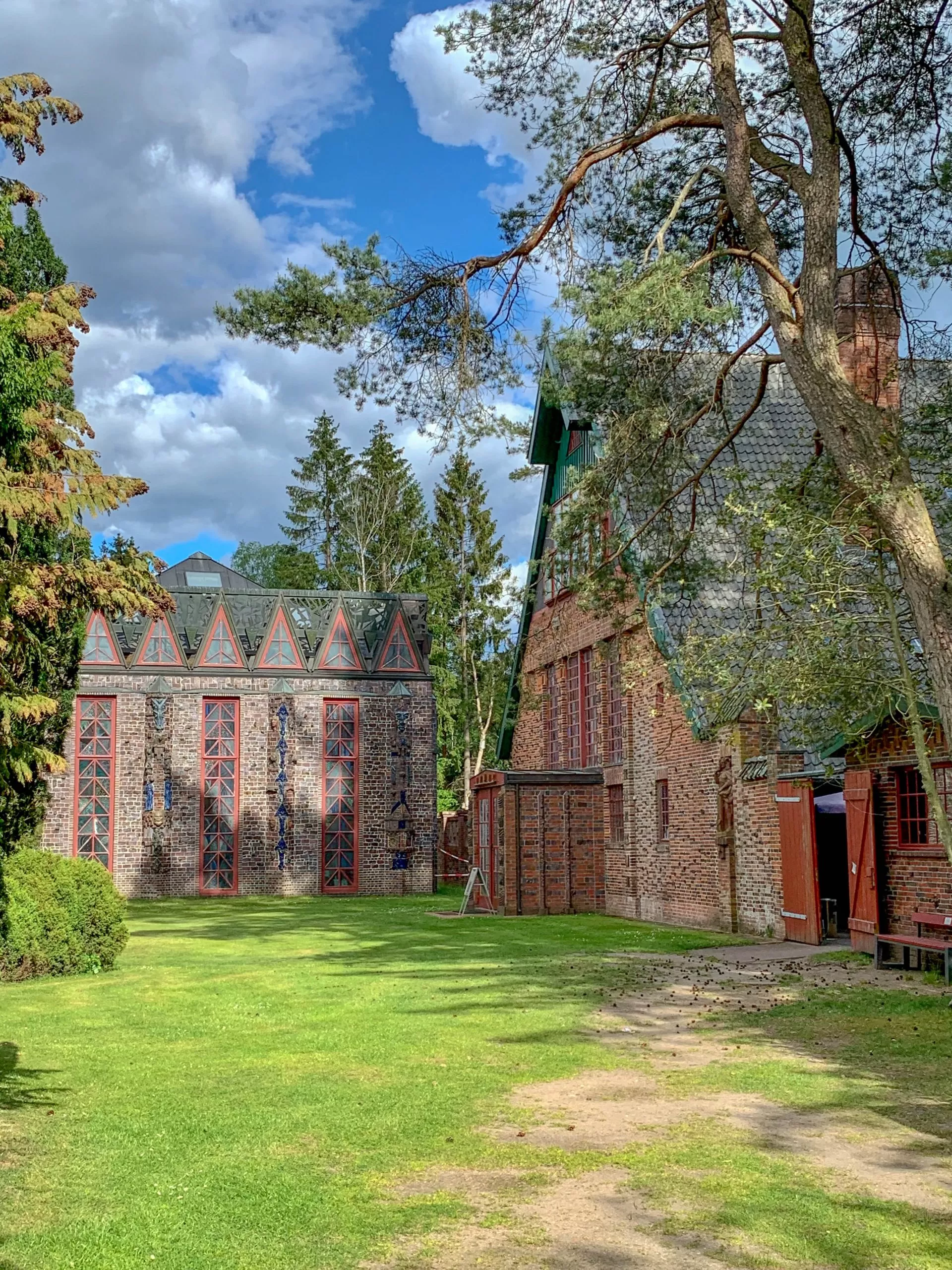
Kunsttempel Kunststätte Bossard, 1926-1928. Design: Johann and Jutta Bossard. Photo: Daniela Christmann
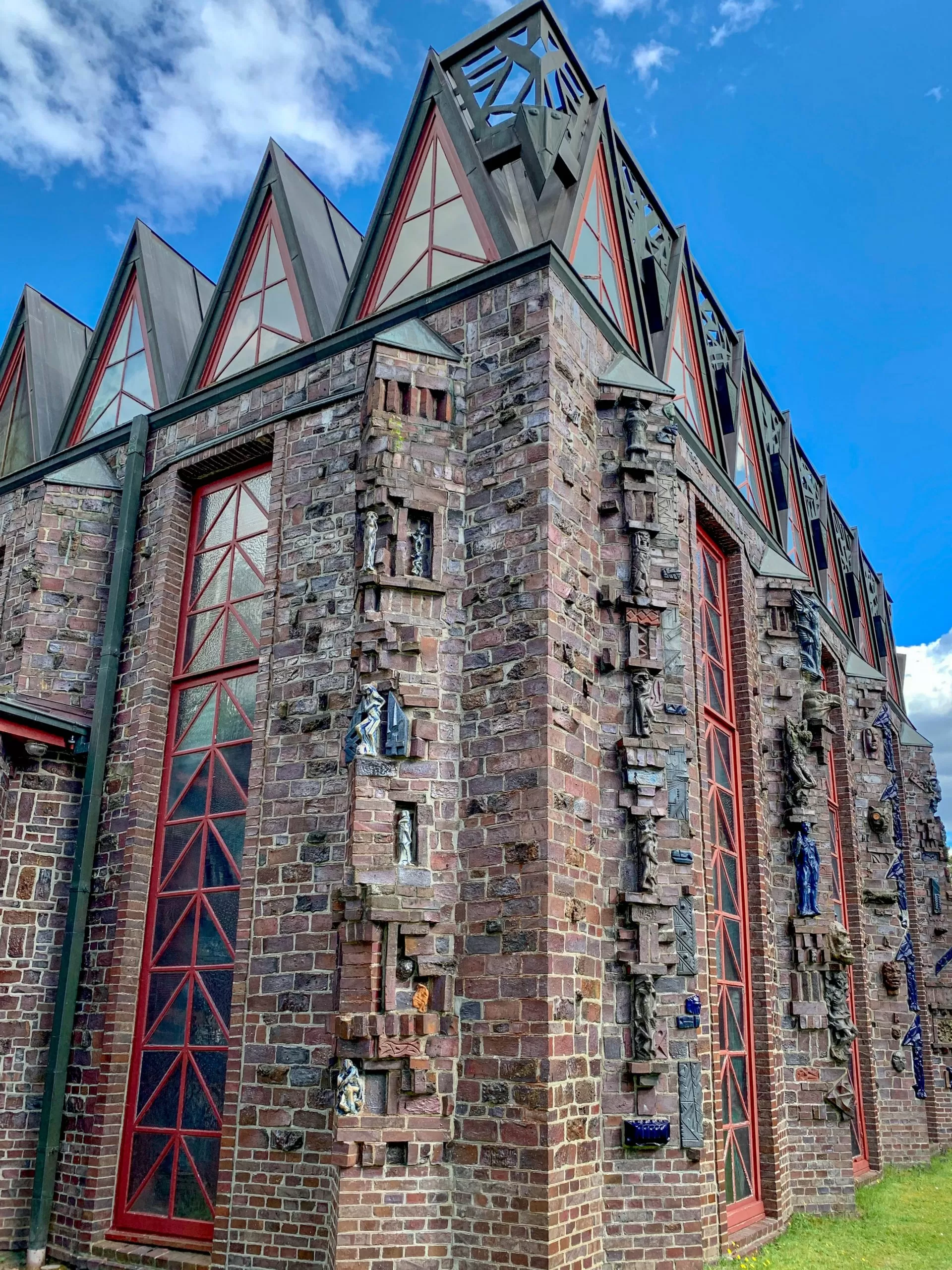
Kunsttempel Kunststätte Bossard, 1926-1928. Design: Johann and Jutta Bossard. Photo: Daniela Christmann
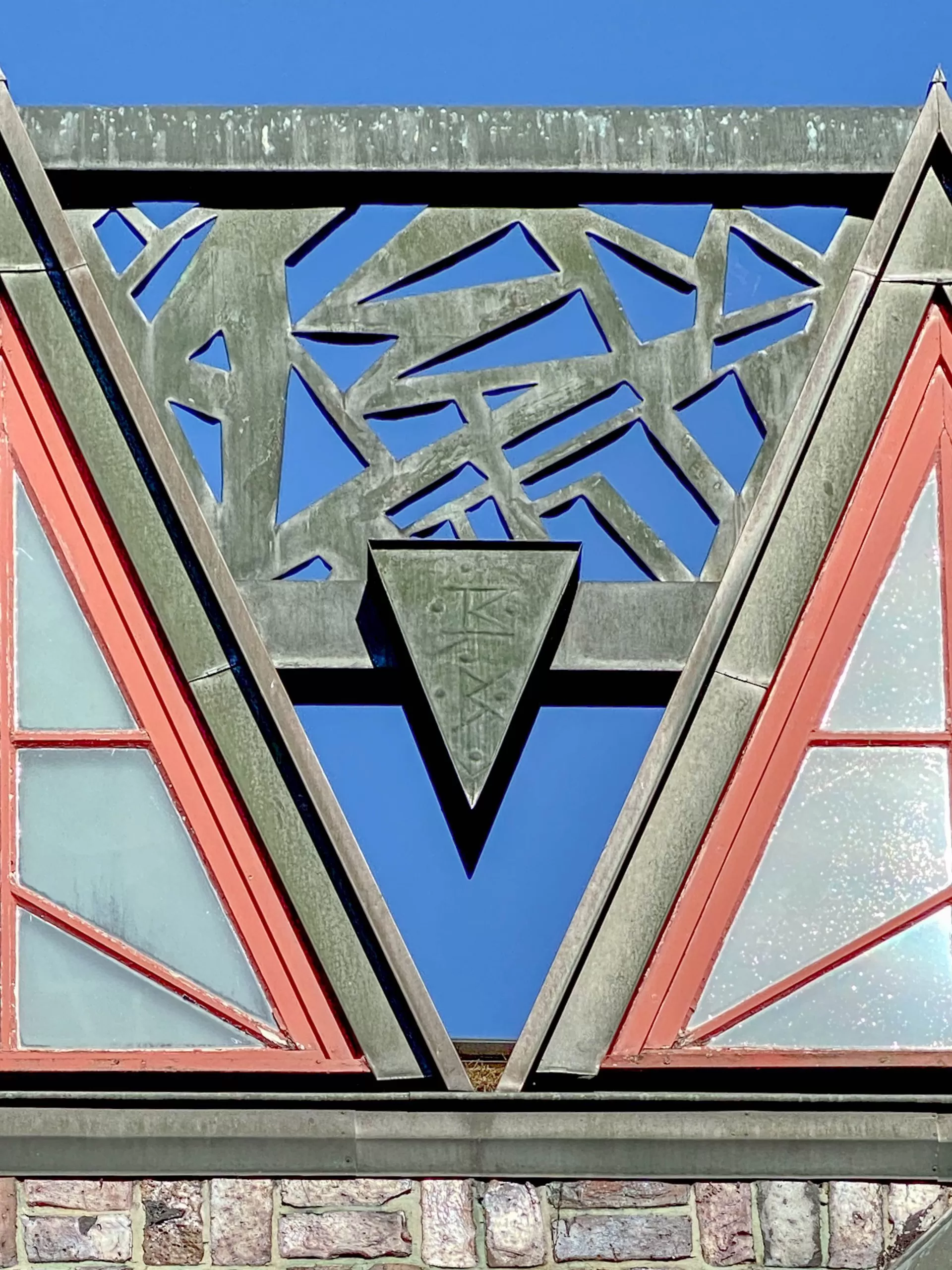
Kunsttempel Kunststätte Bossard, 1926-1928. Design: Johann and Jutta Bossard. Photo: Daniela Christmann
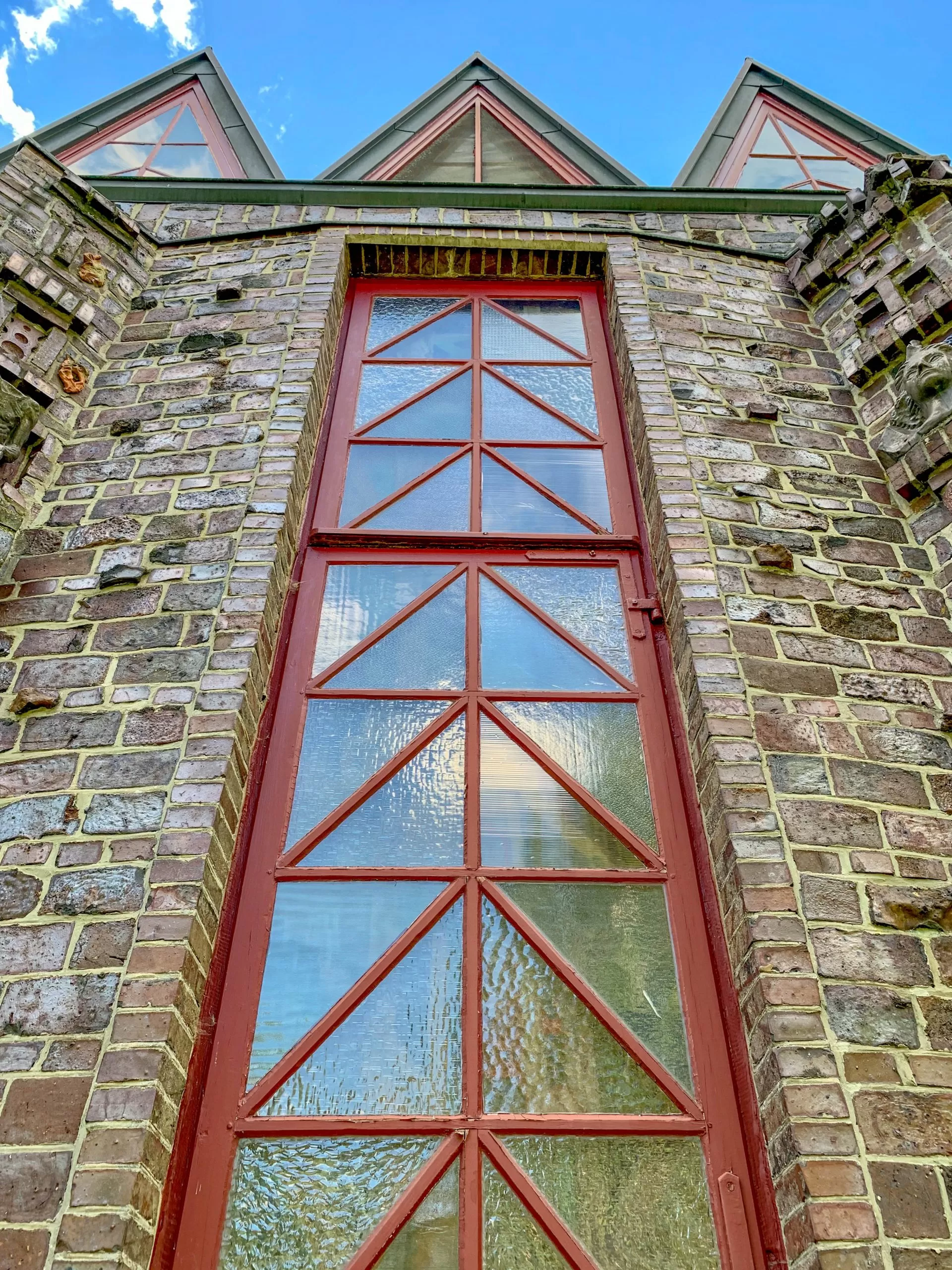
Kunsttempel Kunststätte Bossard, 1926-1928. Design: Johann and Jutta Bossard. Photo: Daniela Christmann
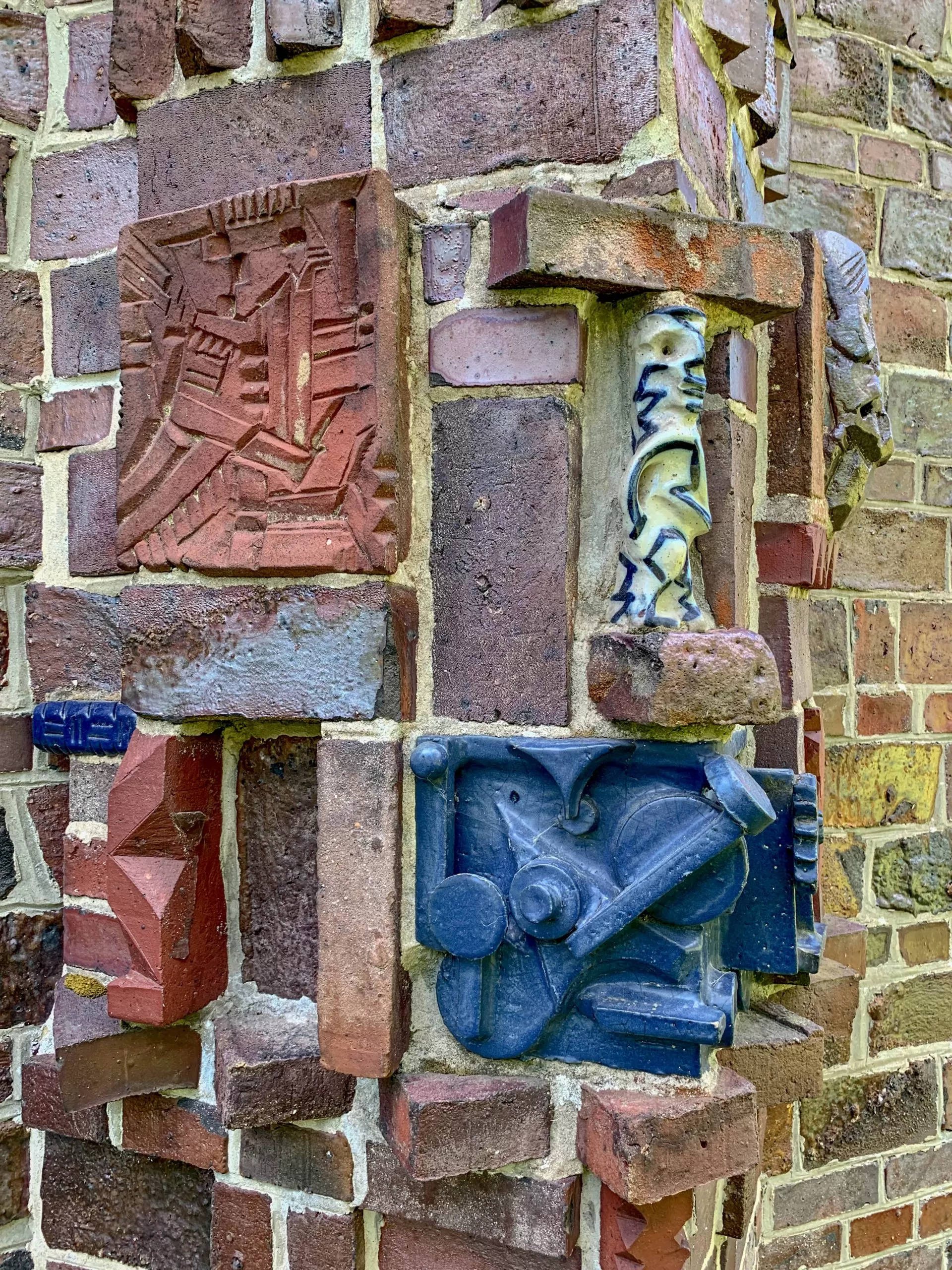
Kunsttempel Kunststätte Bossard, 1926-1928. Design: Johann and Jutta Bossard. Photo: Daniela Christmann
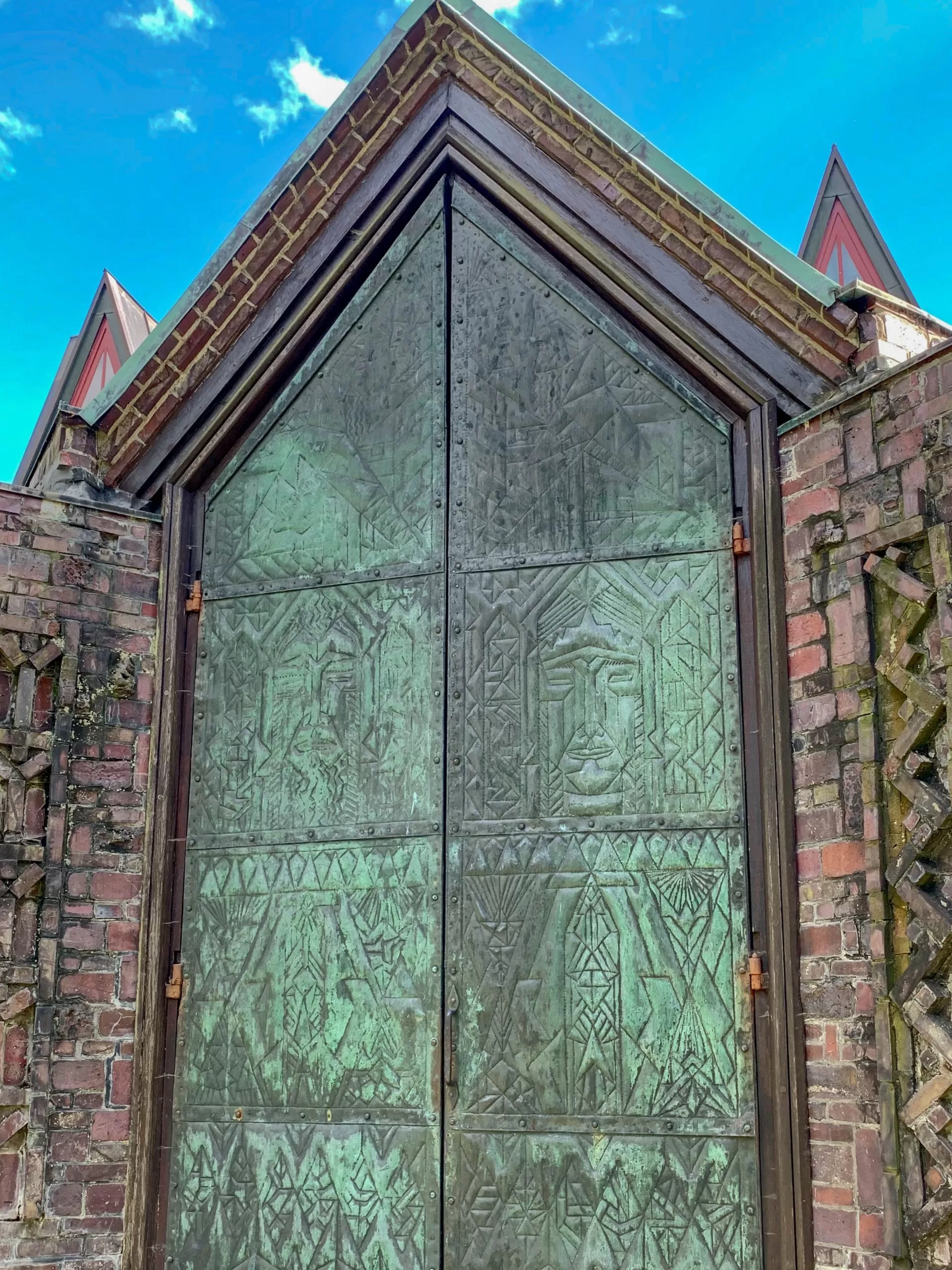
Kunsttempel Kunststätte Bossard, 1926-1928. Design: Johann and Jutta Bossard. Photo: Daniela Christmann
1926 – 1928
Design: Johann and Jutta Bossard
Bossardweg 95, Jesteburg, Germany
The Kunststätte Bossard (Bossard Art Site) in Jesteburg in the Lüneburg Heath was built from 1926 to 1928 as a total work of art according to designs by Johann and Jutta Bossard.
It is located on an approximately 3-hectare plot near Jesteburg in the Lüneburg Heath in Germany.
The site is considered an expressionist Gesamtkunstwerk and is now a museum.
Background
It was here, between 1911 and 1950, that Johann Michael Bossard and his wife Jutta Bosshard-Krull realized their dream of a place where architecture, sculpture, painting, arts and crafts and garden art would become one.
Bossard was born in Zug, Switzerland, in 1874. He grew up in modest circumstances. In 1893 he completed his apprenticeship in a pottery in Zug, where he learned to build kilns and to model and paint tiles.
From 1894 Johann Bossard studied sculpture in Munich. In 1899 he continued his studies in Berlin, majoring in painting.
Kunstgewerbeschule Hamburg
In 1907 Bossard was appointed as a teacher of sculpture at the Kunstgewerbeschule Hamburg, followed by his promotion to professor in 1912.
During these years, the artist designed numerous architectural sculptures for buildings in Hamburg and Berlin, as well as several gravestones.
In Berlin-Treptow he designed the facade decoration on the town hall, in Hamburg he designed, among other things, the clock face on the Stock Exchange Tower and the figure decoration on the Ethnological Museum.
In 1911, his earnings enabled him to purchase a three-hectare plot of land in Wiedenhof near Jesteburg.
There, in 1913, the construction of a residential and studio house began. From 1916 to 1918 he served in the First World War.
Gesamtkunstwerk
Beginning in 1919, the artist gradually implemented his idea of a Gesamtkunstwerk on his property.
He started by designing the private rooms in the residential and studio house, as well as the garden.
In 1926 Johann Bossard married the 29 years younger sculptor Jutta Krull, his former student.
The construction of the adjacent Kunsttempel from 1926 to 1928 marked the beginning of the artist couple’s collaboration on the Gesamtkunstwerk.
From 1932 to 1935, Johann and Jutta Bossard designed the so-called Edda Hall as the last room in the residential and studio building.
1933
After Adolf Hitler’s seizure of power in 1933, Johann Bossard hoped to contribute to the supposed renewal of Germany with his visions of a new social order.
Johann Bossard and his friends and patrons Theo Offergeld and Helmuth Wohltath tried in vain to get officials of the NSDAP interested in the Gesamtkunstwerk in Nordheide.
In the late summer of 1934, the artist realized that his social utopian and artistic concerns were not compatible with those of the National Socialists and largely withdrew from public life.
Research Project
Many questions about the mindset of the artist Johann Bossard and his wife remain unanswered today.
In the summer of 2021, the Johann and Jutta Bossard Art Site Foundation commissioned the Institute of Contemporary History Munich-Berlin to conduct an objective and scientifically sound reappraisal of the role played by the couple Johann and Jutta Bossard during the National Socialist dictatorship.
The research project will extend over several years. The results and interim findings of this research will be communicated regularly as part of a series of events at the Bossard Art Site.
Bossard Kunststätte
The Bossard Kunststätte survived the Second World War unscathed except for a few broken window panes.
The architecture of the so-called Kunsttempel was based on brick expressionism. The masonry consists of third-quality Oldenburg clinker bricks.
Bossard shaped bricks with geometric patterns and inserted them together with ceramic sculptures into the facade of the building.
The porch with portal was added to the Kunsttempel in 1936.
Kunsttempel
In 1928, Bossard created the so-called Second Temple Cycle for the interior of the Kunsttempel, a colorful expressive painting covering all wall surfaces on plywood panels, the wooden beams and the glass surfaces of the ceiling of the room.
On the east and west walls are two large-format triptychs each.
Bossard’s cycle depicts the different paths of life that man can take, and for Bossard, the one who strives for spirituality was the founder of an ideal future community.
The four inner pillars of the temple are made of wooden supports covered with sculptured cement shells.
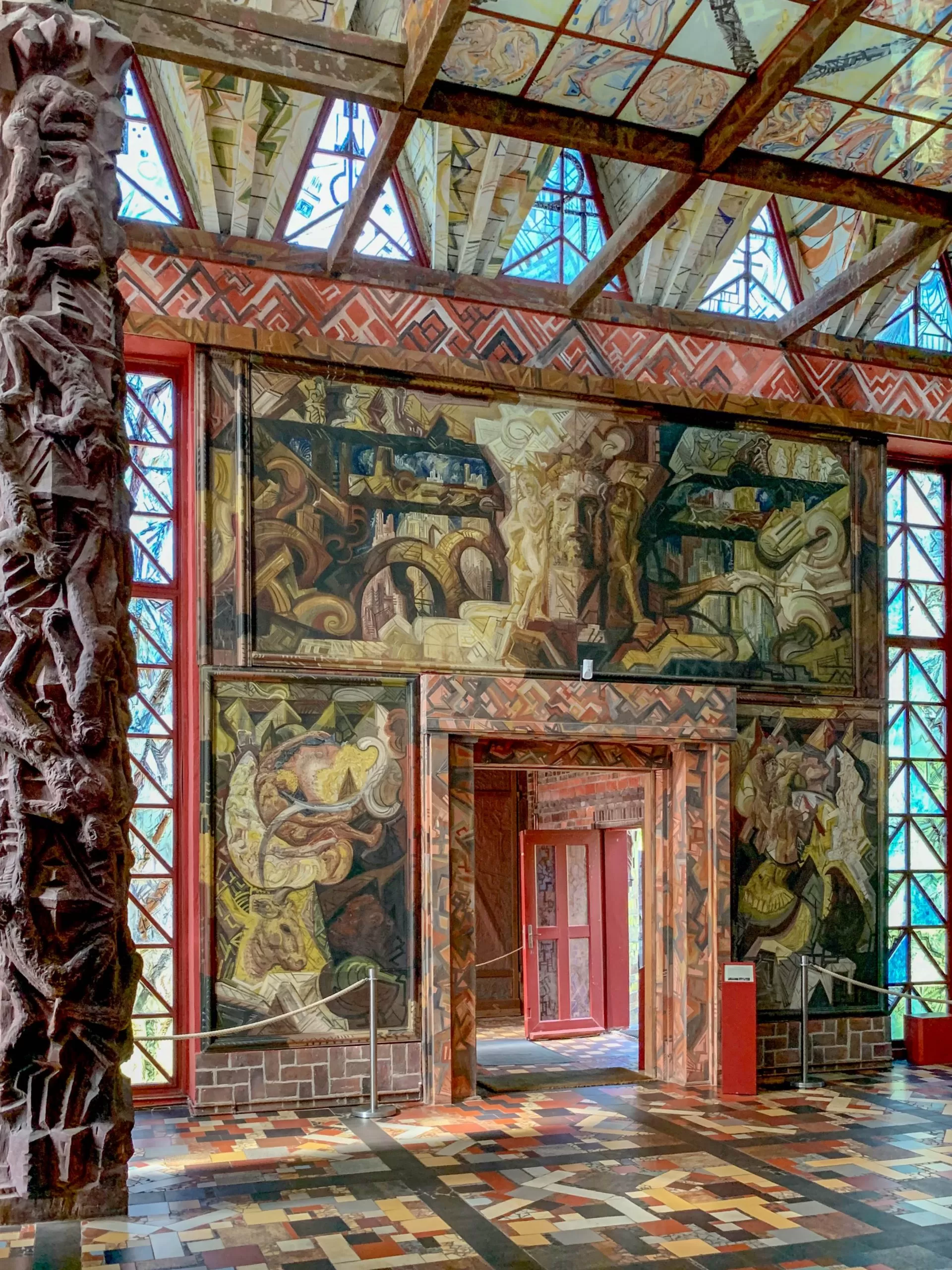
Kunsttempel Kunststätte Bossard, 1926-1928. Design: Johann and Jutta Bossard. Photo: Daniela Christmann
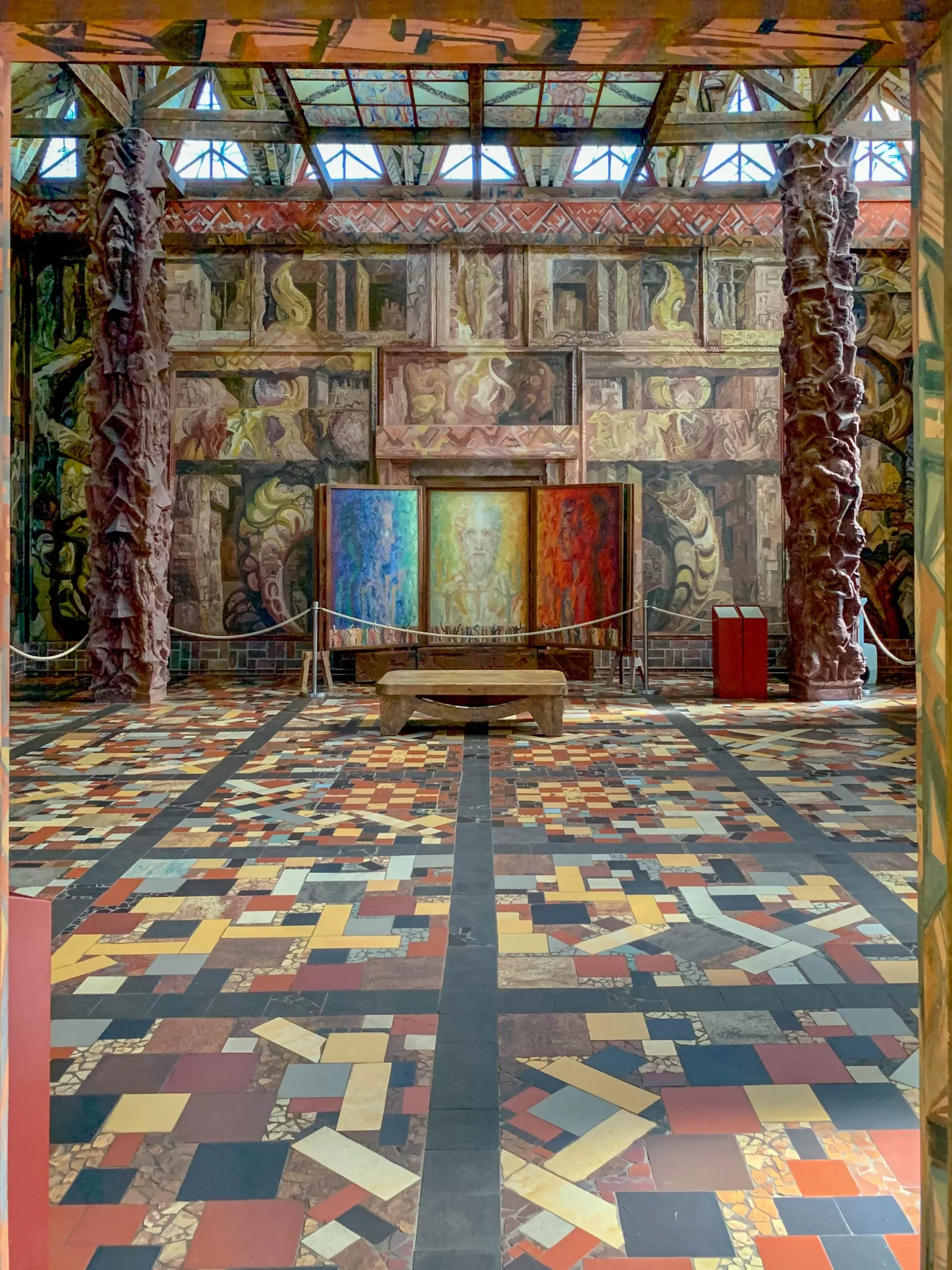
Kunsttempel Kunststätte Bossard, 1926-1928. Design: Johann und Jutta Bossard. Photo: Daniela Christmann
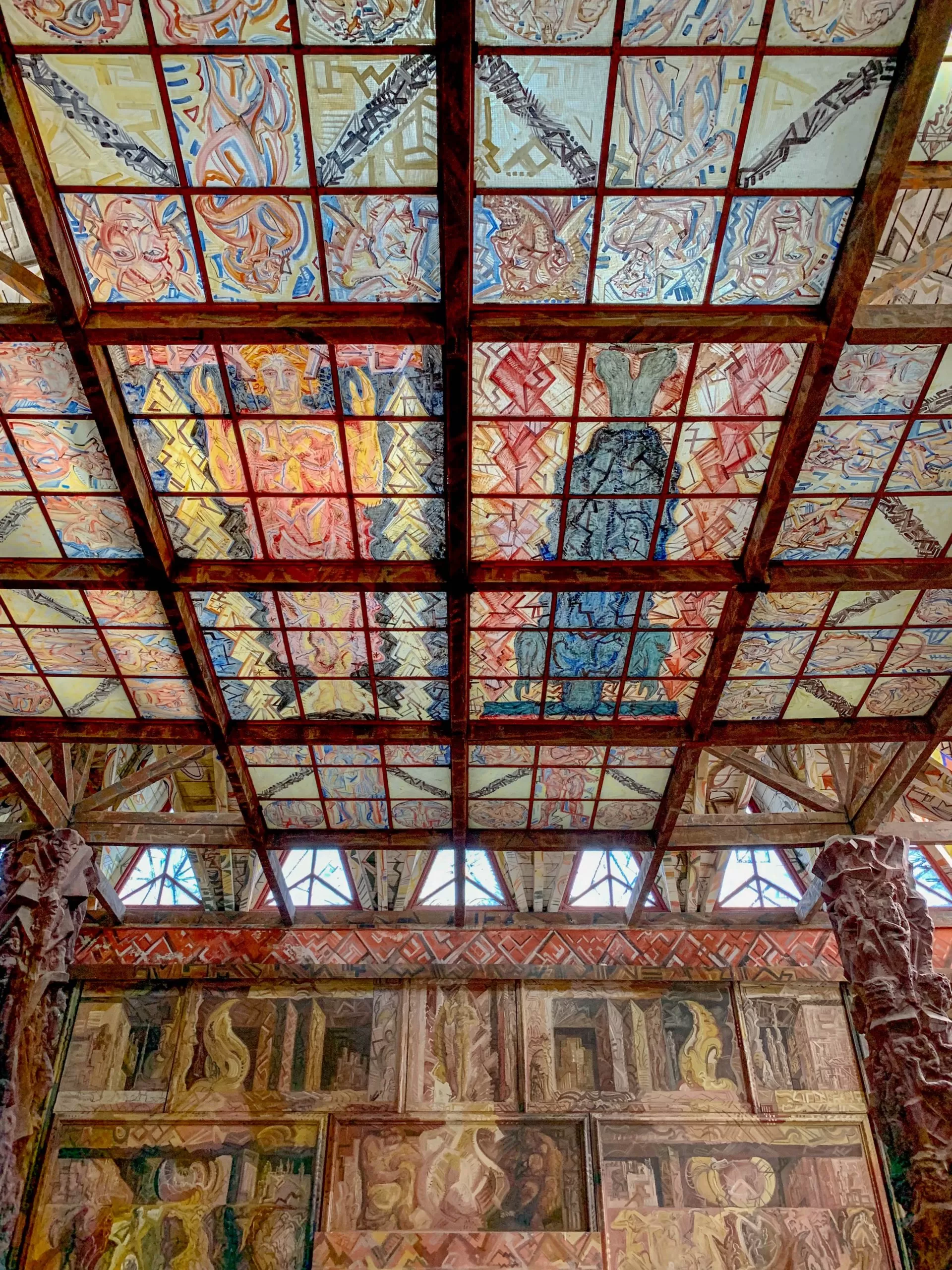
Kunsttempel Kunststätte Bossard, 1926-1928. Design: Johann and Jutta Bossard. Photo: Daniela Christmann
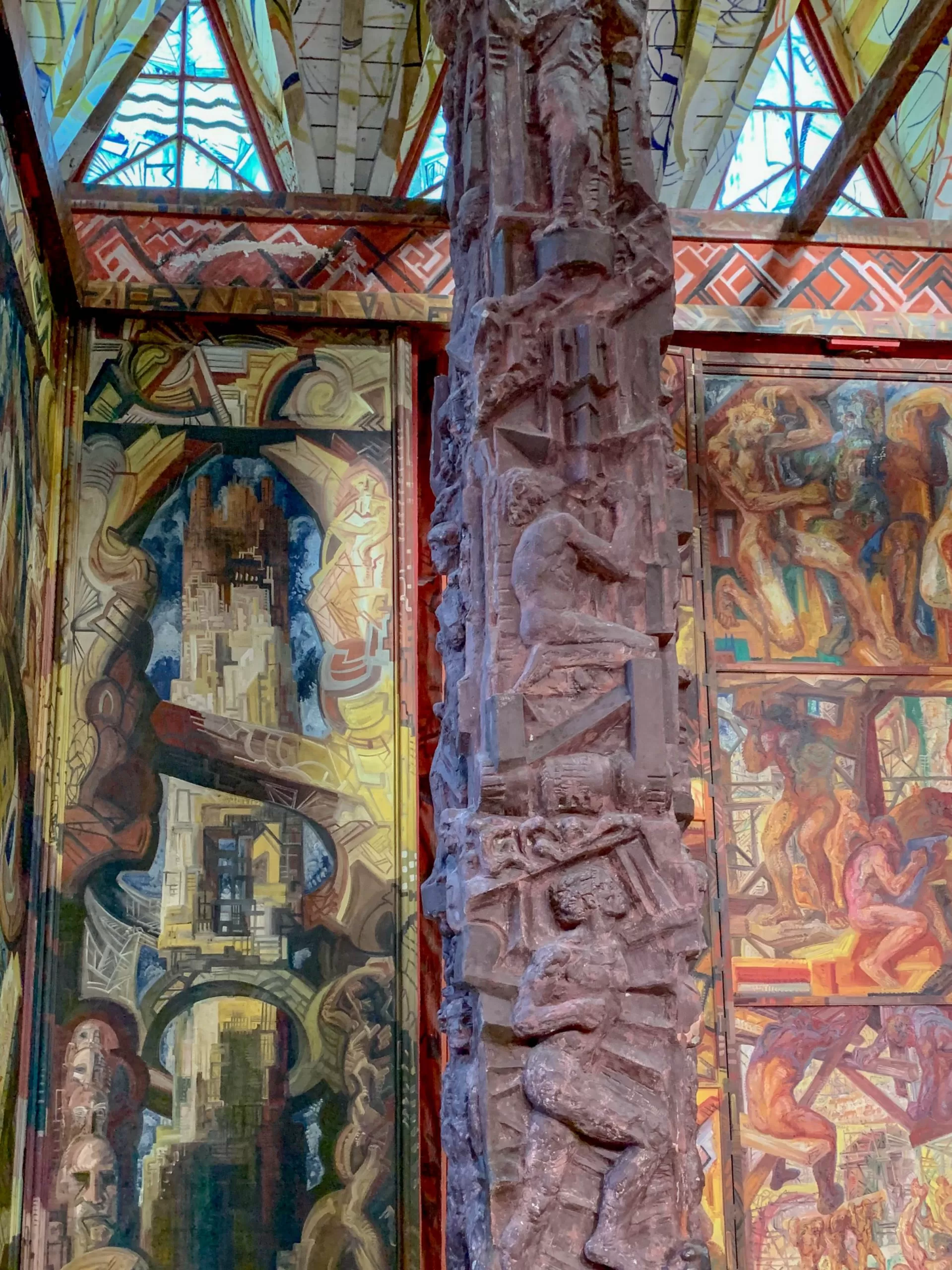
Kunsttempel Kunststätte Bossard, 1926-1928. Design: Johann and Jutta Bossard. Photo: Daniela Christmann
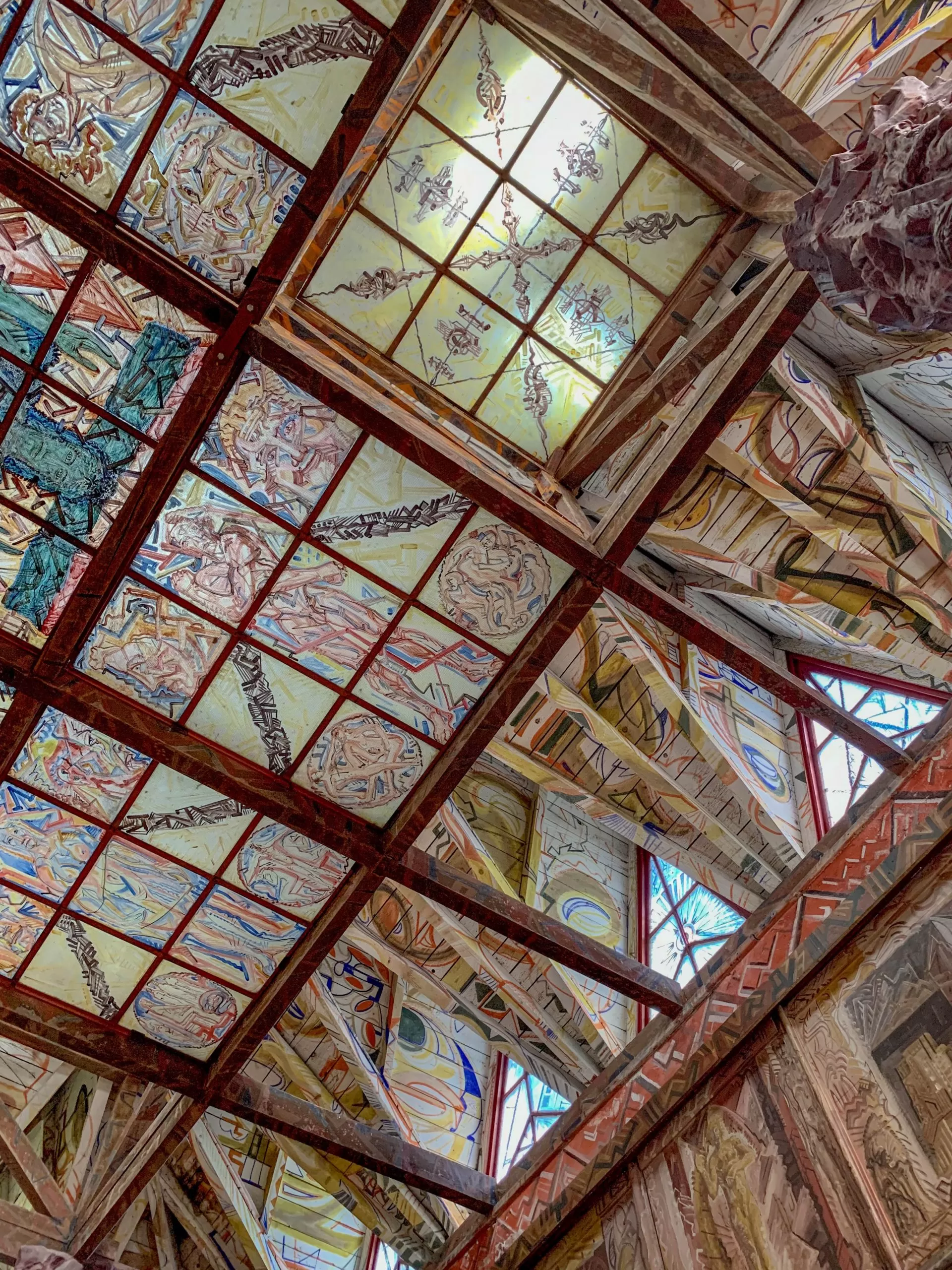
Kunsttempel Kunststätte Bossard, 1926-1928. Design: Johann and Jutta Bossard. Photo: Daniela Christmann
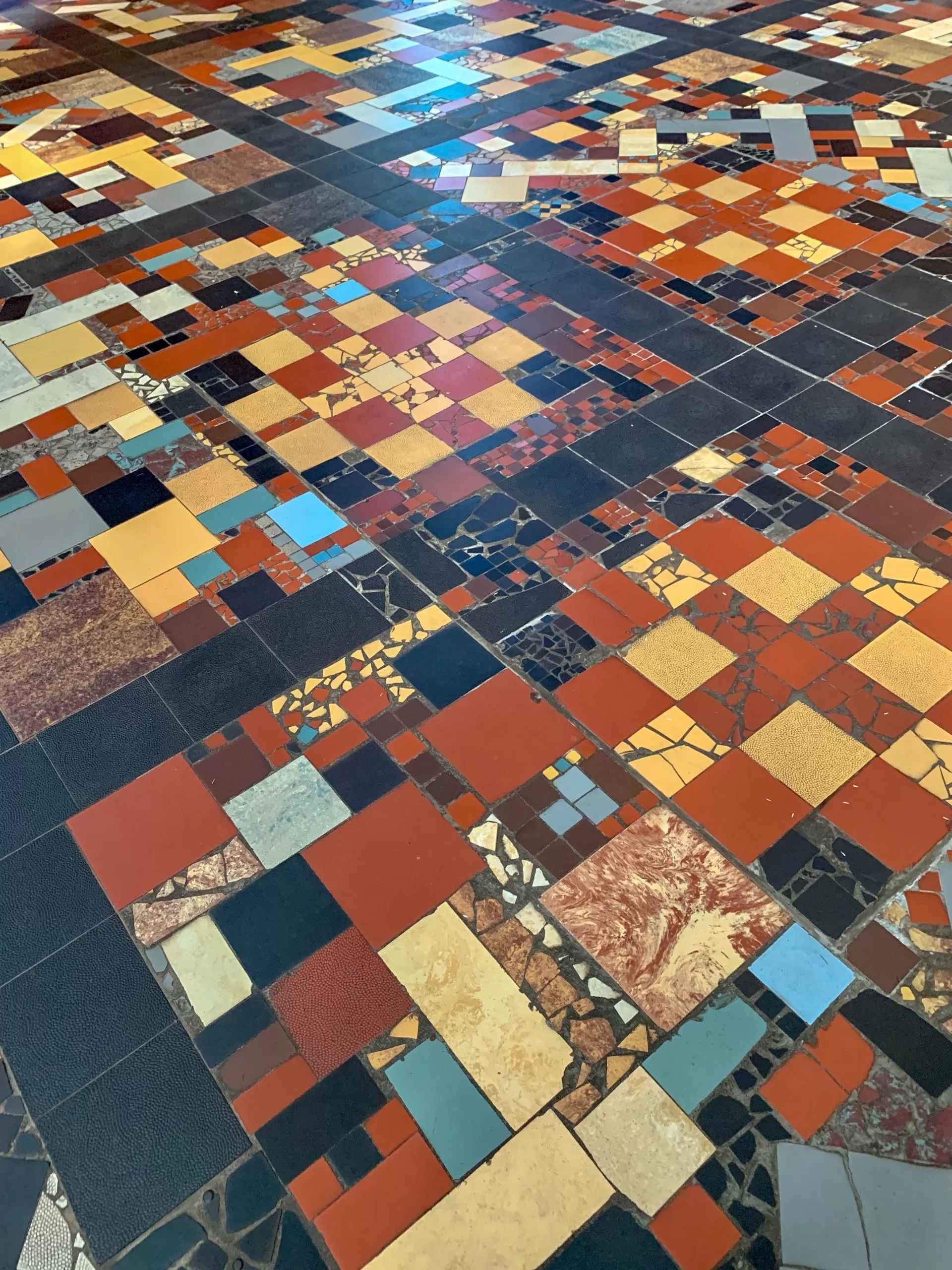
Kunsttempel Kunststätte Bossard, 1926-1928. Design: Johann and Jutta Bossard. Photo: Daniela Christmann

